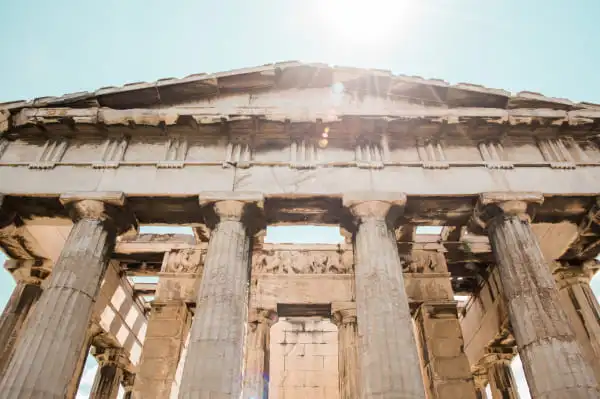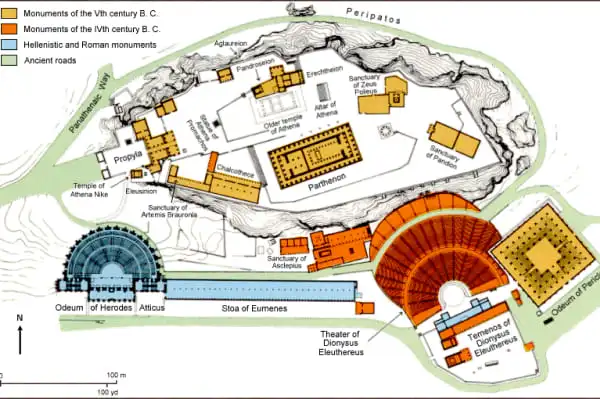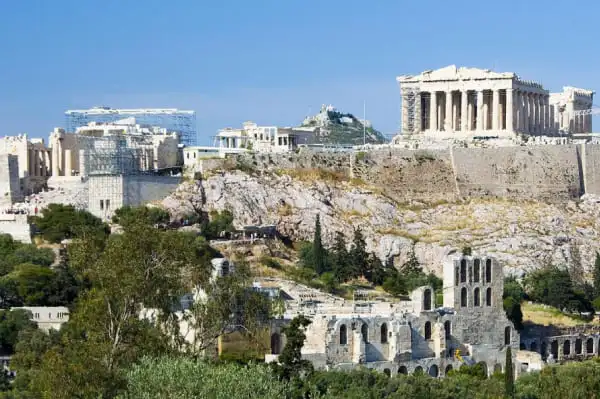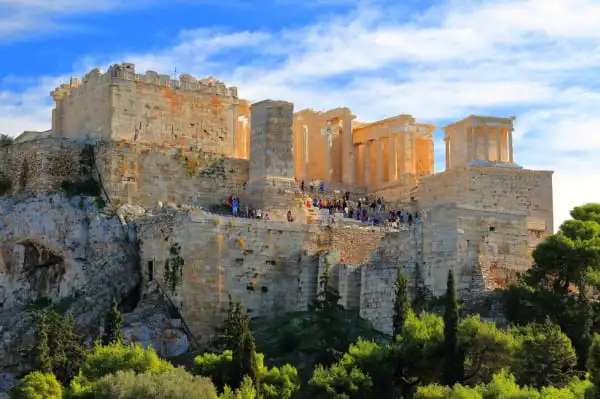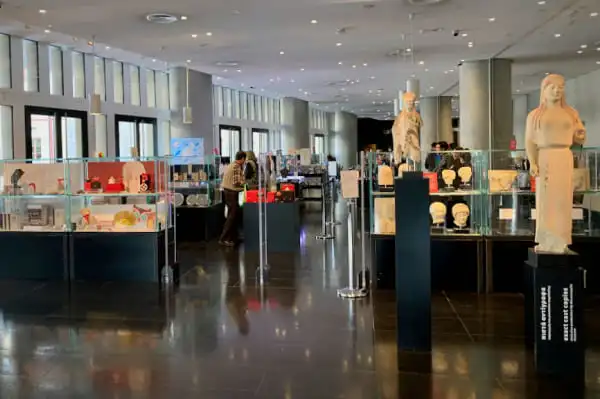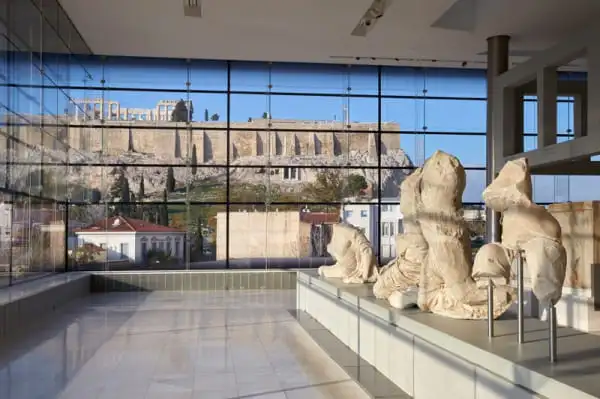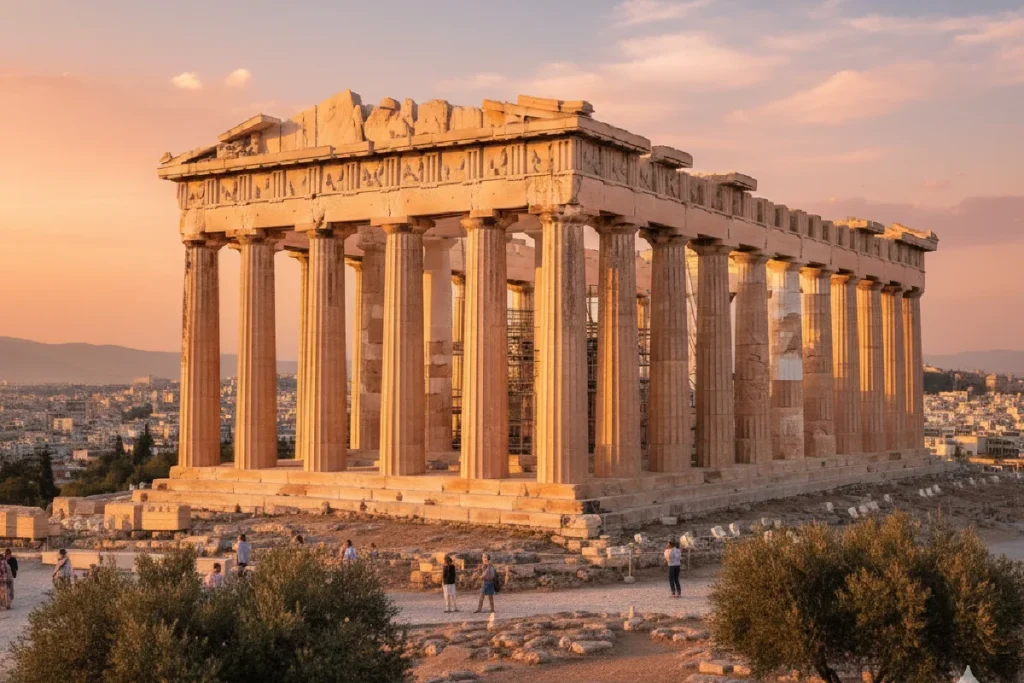Things to do near the Acropolis
Explore with us all the places of interest you can visit near the Acropolis and create your best possible trip.
So you’ve already walked around the Acropolis and taken in all its magnificence. What now? The great news is that Acropolis is not the end of the road. The areas surrounding the famous hill are packed with history, incredible food, and some of the best views in Athens.
Exploring the Acropolis Museum
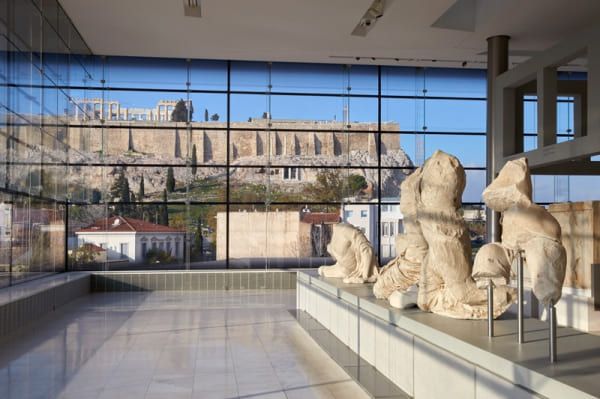
This isn’t your typical dusty museum. The building houses over 4,000 artifacts from the Parthenon and surrounding temples, but what really sets it apart is how it presents them. The original Caryatid statues stand here (you know, those graceful female figures that once held up the Erechtheion’s roof). You’ll also find sections of the Parthenon frieze and metopes.
But here’s where it gets clever. The top-floor Parthenon Gallery is specifically aligned with the actual Acropolis above. So as you walk around viewing the sculptures, you can look up through the windows and see the monument they came from. It’s like having a conversation between past and present, right there in the same room.
Practical details: hours and how long you'll need
The museum opens daily, typically 9:00 to 20:00 during summer (with Friday evenings running even later), though winter hours are shorter. You can grab tickets and audio guides on-site or book online ahead of time.
Most people spend around 2 hours here, which gives you enough time to take in the major exhibits without rushing. Since it’s literally a short stroll from the Acropolis in the Makrygianni area, you can easily combine both in one outing

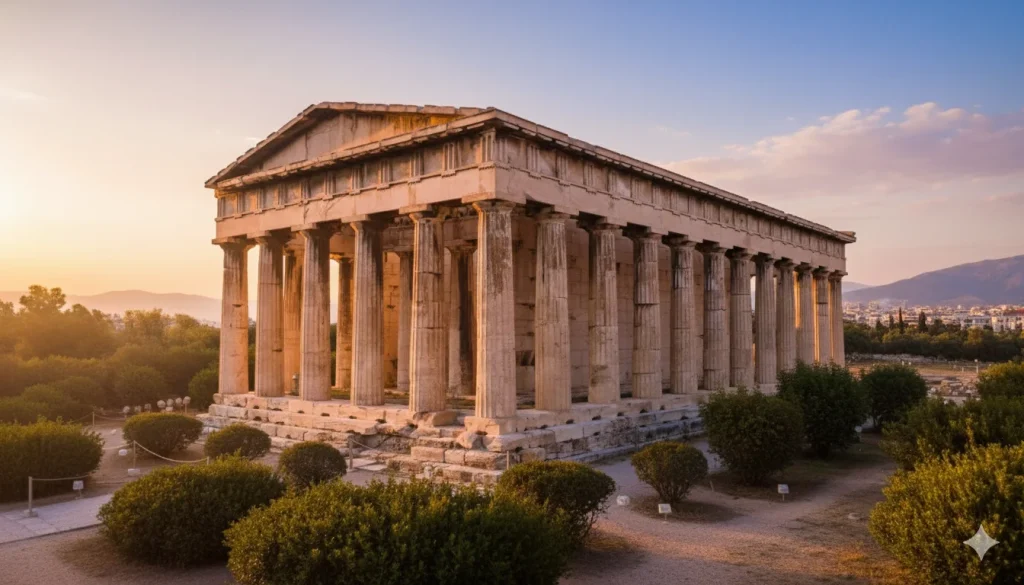
Walking through the Ancient Agora
Why the Ancient Agora matters more than you think
Look, the Acropolis gets all the glory. But if you want to understand how ancient Athenians actually lived—how democracy worked in practice, where people shopped, argued, voted—you need to walk through the Ancient Agora.
This was the true center of classical Athens. Not the ceremonial center (that was up on the rock), but the real, messy, everyday center where citizens from all walks of life gathered. The name literally means “gathering place,” and that’s exactly what it was: marketplace, political arena, social hub all rolled into one.
As you wander the site, you’ll encounter the Stoa of Attalos—a reconstructed 2nd-century BCE covered colonnade that once housed shops. Today it holds the Museum of the Ancient Agora, where coins, pottery, and inscriptions help you picture the bustling scene that once filled these spaces.
The Temple of Hephaestus: Athens' best-preserved ancient temple
The Temple of Hephaestus stands almost completely intact. Built in the late 5th century BCE and dedicated to Hephaestus (god of metalwork) and Athena, this Doric temple sits on a small hill at the Agora’s northwest corner.
Walk up to it and you’ll get a rare sense of how these classical temples actually looked when they were new—the proportions, the columns, the pediments all in place. Sometimes called the Theseion, it’s survived remarkably well compared to its more famous neighbor up the hill.
Photography routes
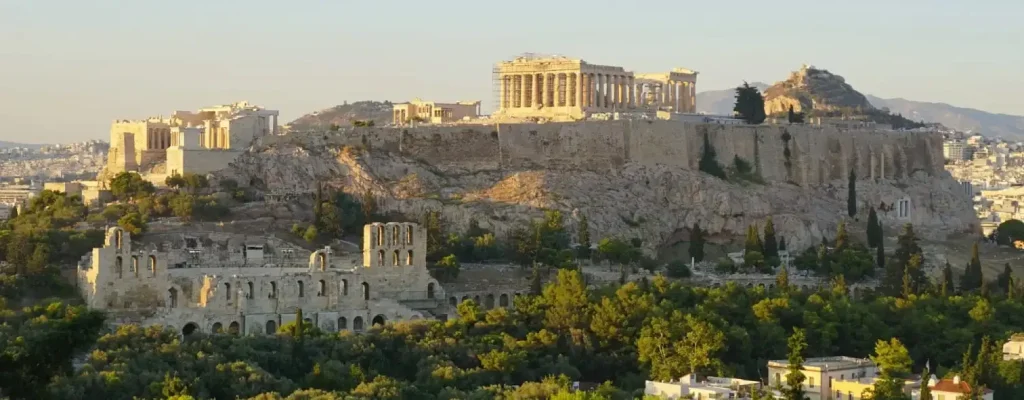
Athens rewards anyone with a camera and a bit of patience. Several spots near the Acropolis offer those views that make you stop scrolling through your feed.
Anafiotika is your first stop. This tiny whitewashed quarter tucked into Plaka feels like someone transplanted a Cycladic island village right under the Acropolis. The contrast between the intimate scale of the neighborhood and the monumental Parthenon creates photos that capture Athens’ layered character.
Then there’s Filopappos Hill, a tree-covered, relatively quiet hill across from the Acropolis. From its summit you get a sweeping panorama: the city spreading out below, the Parthenon perched on its rock, mountains in the distance. Arrive about an hour before sunset and watch the Parthenon’s western face glow in that golden light.
Areopagus (Mars Hill), the rocky outcrop just north of the Acropolis, offers something different: dramatic, close-range perspectives. At sunset, the ruins are right there, massive and immediate. You’re trading the distant panorama for intimate proximity.
Other worthy spots: the Acropolis Museum’s cafe terrace, certain rooftop bars around Syntagma. But honestly, the magic happens when you mix and match.

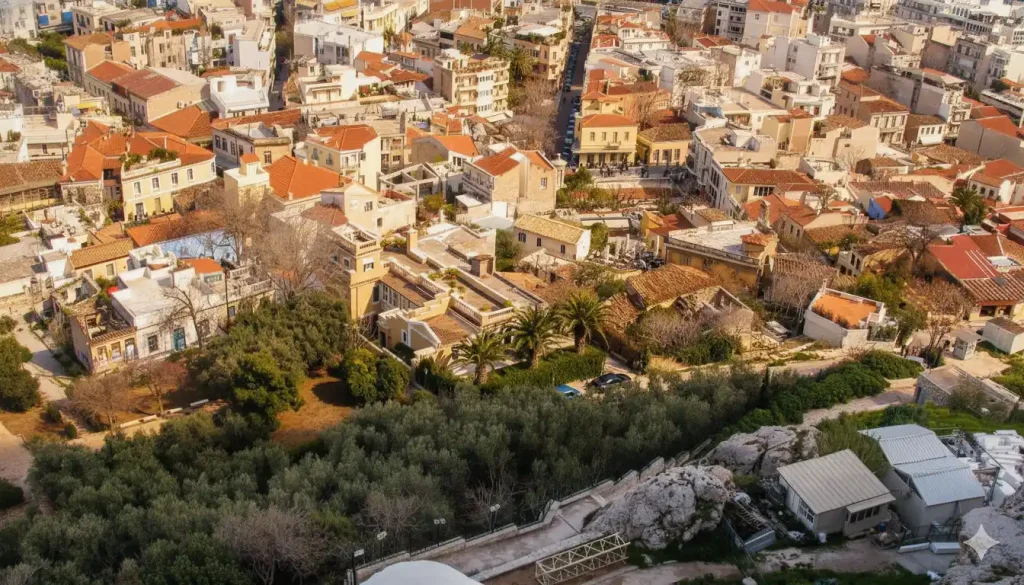
Discovering Plaka
Getting lost in Plaka's narrow streets (and why that's exactly what you should do)
Plaka is where you come to feel Athens, not just see it. Winding pedestrian alleys, cobblestone lanes, neoclassical houses painted in warm colors, bougainvillea cascading from balconies—it’s largely car-free, which means you can actually wander without dodging traffic.
Every turn reveals something new, a tiny Byzantine church tucked between buildings, a hidden square where locals sip coffee, a shop selling olive oil in hand-painted bottles. The neighborhood functions as a living museum, where the past hasn’t been preserved so much as it’s continued.
And when you do get lost (you will), you might stumble into Anafiotika—that “island village” of white houses and art-lined alleys we mentioned earlier. It’s technically part of Plaka but feels like its own secret world.
Where to eat and what to try in Plaka
After all that exploring, you’ll want to refuel. Plaka is packed with traditional tavernas where the atmosphere is as much a part of the meal as the food. Settle at a vine-shaded table and dive into classic Greek dishes. Think moussaka, souvlaki, and fresh Greek salads with creamy feta.
Remember, locals eat late, so dinner service often starts after 8:00 PM, and the best tavernas fill up around 9 or 10. Embrace the rhythm, order a mezze plate, and soak in the lively, authentic vibe.
Visiting the Roman Agora and Tower of the Winds
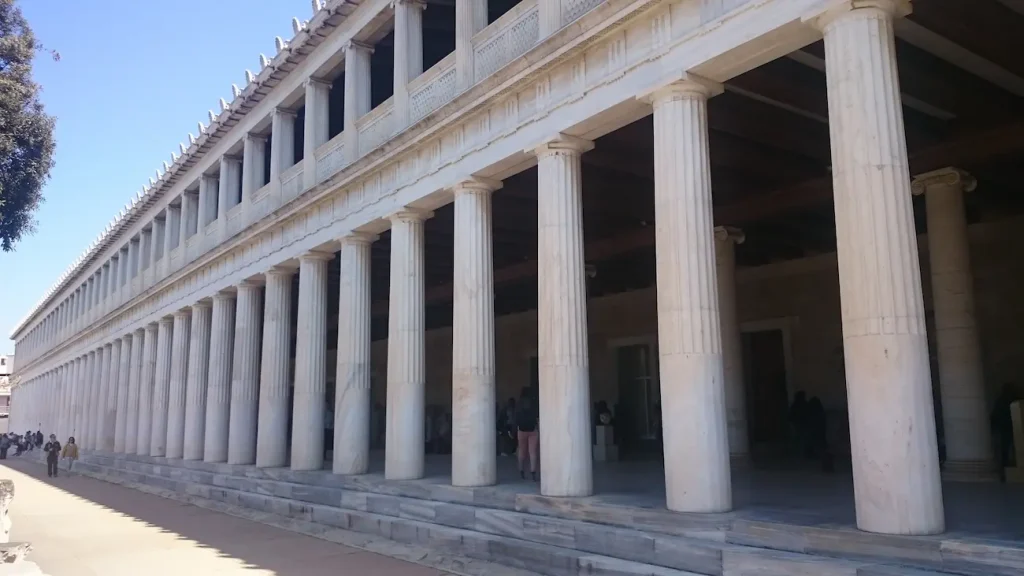
Just north of Plaka’s shopping streets, you’ll find two neighboring sites from a different era entirely. The Roman Agora (technically the Agora of Caesar and Augustus) was built in the 1st century BCE when Athens fell under Roman rule. This was their new marketplace and gathering place, with partially restored colonnades and remains of shops and fountains.
Standing within the archaeological site is the Tower of the Winds, a clocktower completed around 50 BCE. It’s carved with reliefs of the eight wind gods and once functioned as an ancient clock and weather vane. Remarkably, this Hellenistic building still stands virtually intact, its eight faces still showing you which winds brought which weather.
Across the way sits Hadrian’s Library, a massive Roman building erected in 132 CE by the emperor himself. It housed Athens’ largest book collection and lecture halls.


Taking in the view from Philopappos Hill
Philopappos Hill (sometimes called Mouseion Hill) is the green, tree-covered hill just southwest of the Acropolis. While tourists crowd the monument itself, this hill stays relatively quiet, which is exactly why it’s celebrated for offering panoramic view of the Acropolis.
From its paths and summit, you see the Parthenon and all of Athens spread out below you. The perspective is perfect: elevated enough to appreciate the Acropolis in context, close enough that the details of the Parthenon’s columns remain sharp and clear.
The recommendation is always the same: arrive about an hour before sunset.
The views alone justify the climb, but Philopaphos Hill holds more than photo opportunities. At the summit stands the Philopappos Monument, a large 2nd-century CE marble mausoleum with grand carved friezes and columns still visible.
Experiencing the Odeon of Herodes Atticus

Nestled into the southwest slope of the Acropolis, the Odeon of Herodes Atticus, locals call it the “Herodeon”, tells a story that’s equal parts romance and resilience. Built between 160 and 174 AD by the immensely wealthy Tiberius Claudius Herodes Atticus, this magnificent theater was his memorial to his wife, Appia Annia Regilla. Love expressed in marble and stone.
The original design featured a three-story stage building with soaring arches, a semi-circular orchestra paved in black and white marble, and seating for nearly 5,000 spectators.
But here’s the catch: you can’t just wander in whenever you’d like. Entry is generally restricted to ticket holders for performances, which actually makes any visit more special.

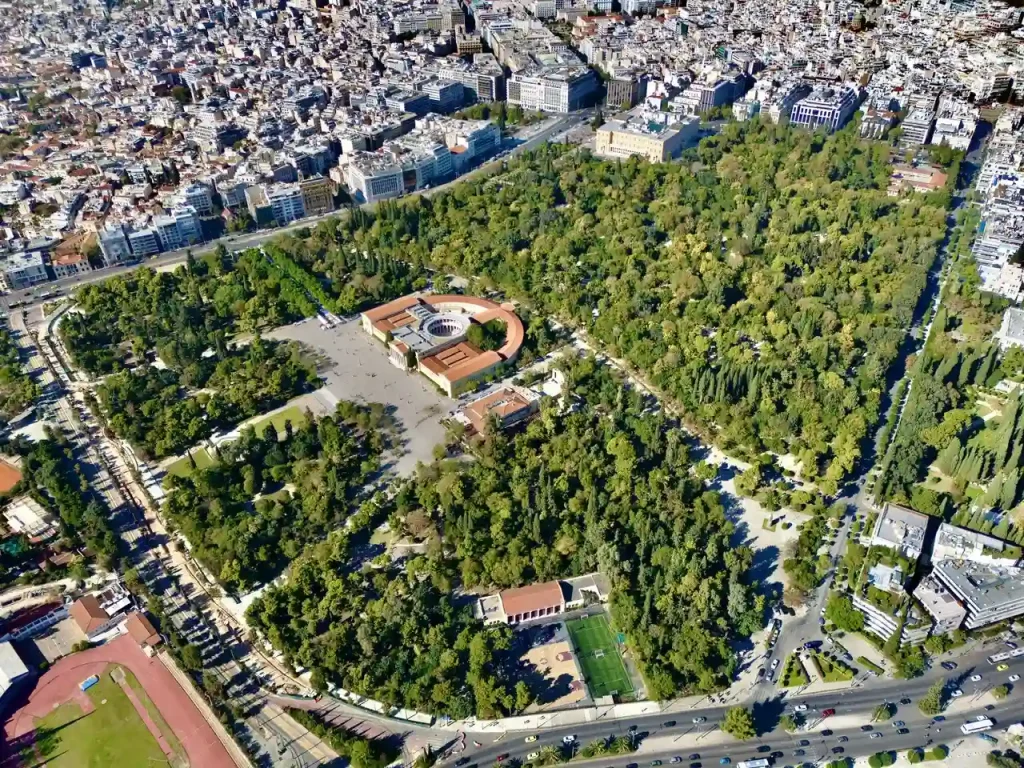
The National Garden
After hours of walking through sun-drenched archaeological sites, your body starts craving shade.
That’s when the National Garden becomes exactly what you need—a 158,000-square-meter green oasis just east of the Acropolis.
The garden was commissioned in 1838 by Queen Amalia, the first queen of modern Greece, as the private Royal Garden. German agronomists designed it, planting over 500 species from around the world alongside native Greek flora. Those grand Washingtonia palms at the entrance? The queen herself planted them in 1842.
Exploring Monastiraki
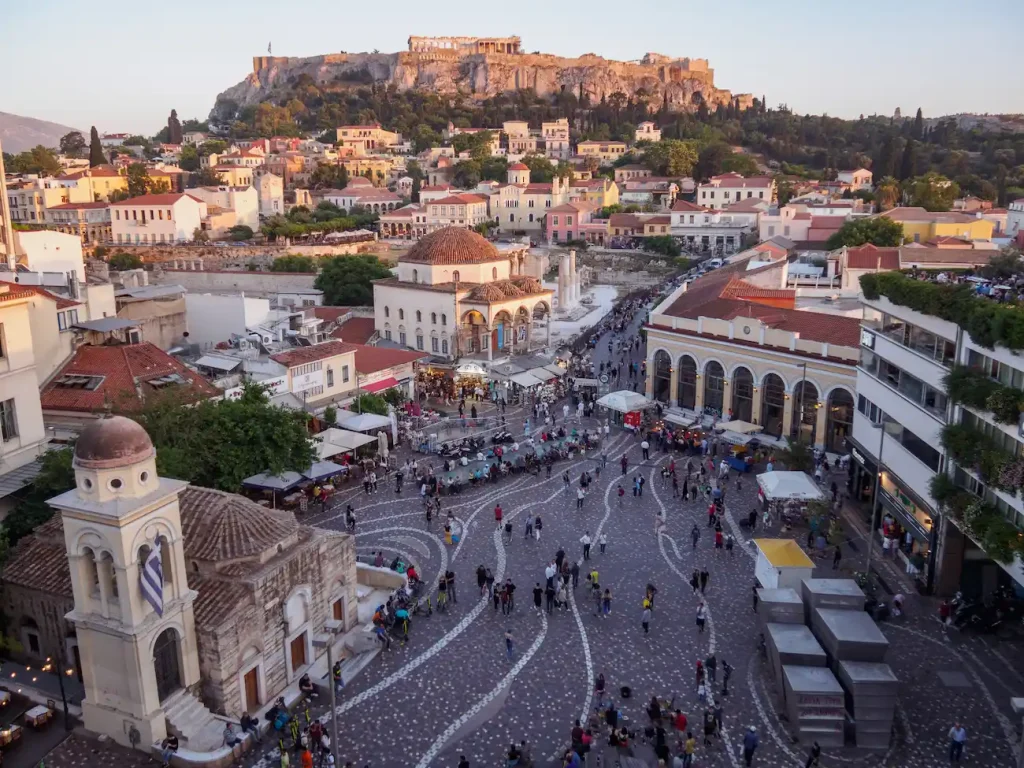
Monastiraki is where Athens feels most alive. Here you can visit:
- The famous Monastiraki Flea Market is an adventure. On any day, the streets are packed with shops selling everything from souvenirs to handmade sandals. But for the real deal, go on a Sunday. The market explodes, with vendors laying out antiques, vinyl records, and all sorts of curios on blankets.
- The square itself is the energetic core. From here, you can see layers of history stacked together: a tiny Byzantine church, an 18th-century Ottoman mosque, and the sprawling ruins of Hadrian’s Library all within a few steps.

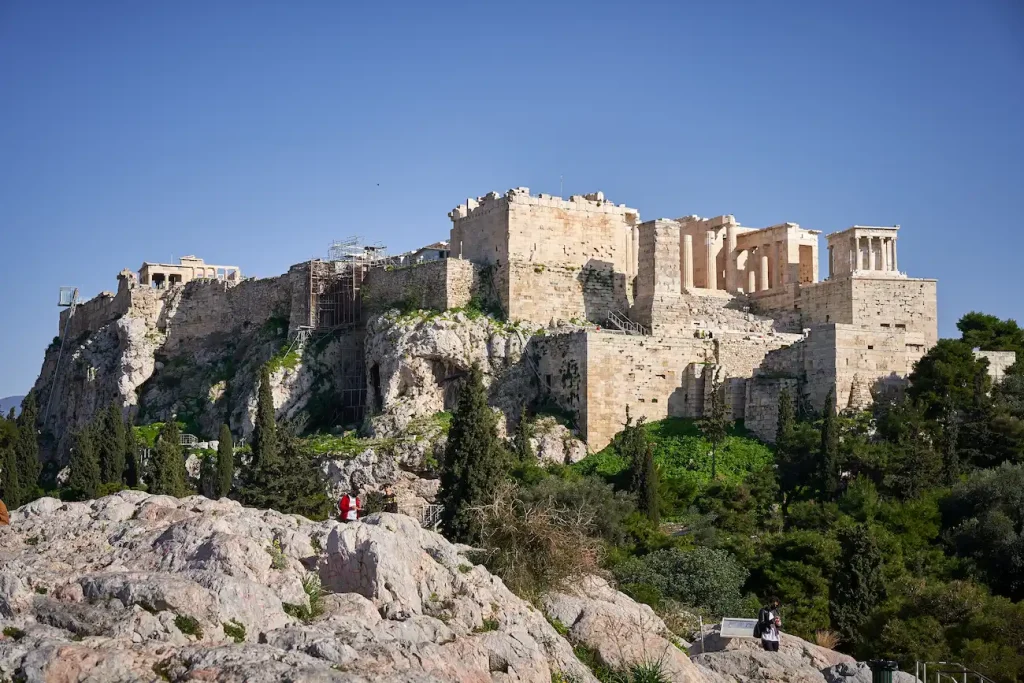
Climbing Areopagus (Mars Hill)
Just below the main entrance to the Acropolis sits a bare, rocky outcrop that packs an absurd amount of significance into its modest size. The Areopagus, Mars Hill, is a short, accessible climb via rock-hewn and modern metal stairs, but what you’re ascending is layers of mythology, history, and spiritual importance.
The name means “Rock of Ares.” According to myth, this is where the god of war was tried by the other Olympians for murder, giving the hill its historical function as the seat of the Council of the Areopagus, the oldest and most revered judicial body in Athens, which for centuries held jurisdiction over the most serious crimes.
Dionysiou Areopagitou Street

Some walks are just about getting from point A to point B. Others are destinations in themselves.
Dionysiou Areopagitou Street—a wide, stone-paved pedestrian promenade—falls firmly in the second category. Stretching for approximately 700 meters along the southern base of the Acropolis, it’s the central artery of a unified archaeological park, a 20th-century urban planning achievement that connects the city’s most important ancient sites.
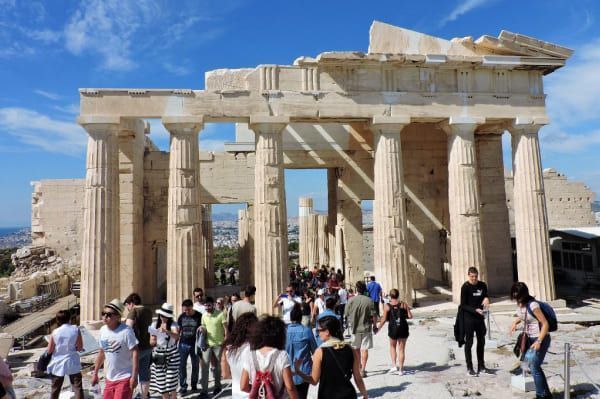
Traveler information
The Acropolis of Athens is Greece’s most popular tourist destination. The Parthenon, the Erechtheion, and the Propylaia are just a few of the…
The Acropolis has played a significant role in Greek history and culture and is widely regarded as one of the most important archaeological…
In the heart of Athens, Greece, on a rocky outcrop, stands the Acropolis, a well-known ancient landmark. The hill, standing at 156 meters high…
Taking the metro is a quick and convenient option for getting to the Acropolis in Athens. There are two metro stations that can be used to re…
While visiting the Acropolis in Athens is a must-see experience for anyone interested in ancient Greek history and culture, not visiting the…
Beat the crowds and scorching heat with Acropolis Skip the Line tickets. No more waiting in queues under the Greek sun….
More information
The Acropolis of Athens is a testament to the rich history and culture of Greece and Western civilization. Over the centuries…
The Acropolis Museum is a modern museum located in Athens, Greece, which serves as a beacon for the preservation and…
This October 2025, Athens is witnessing a significant event: the Parthenon stands completely free of scaffolding for the first time in two centuries…

